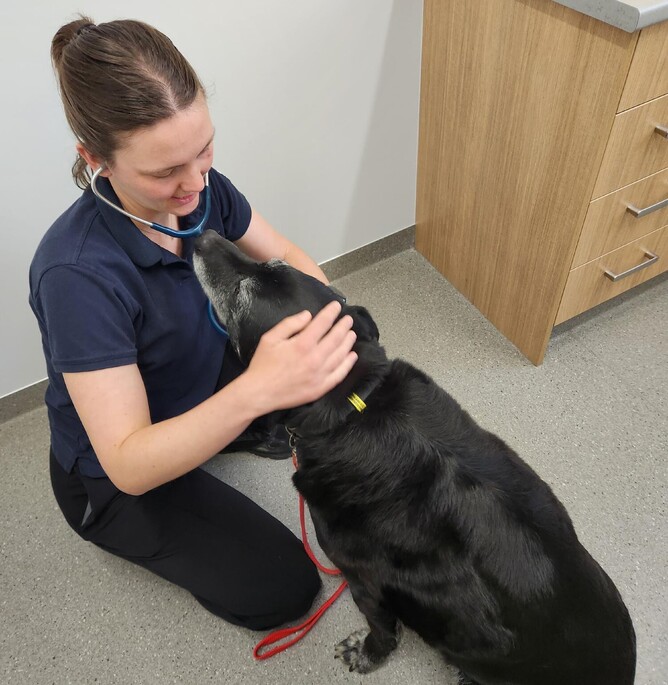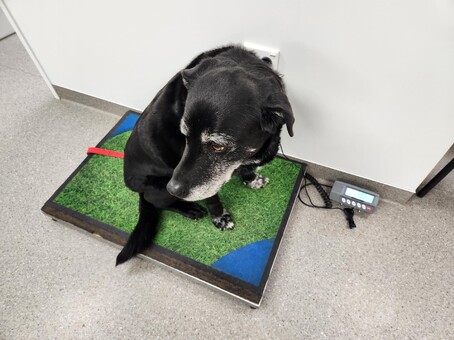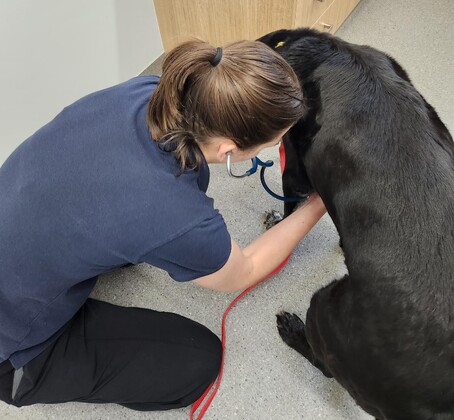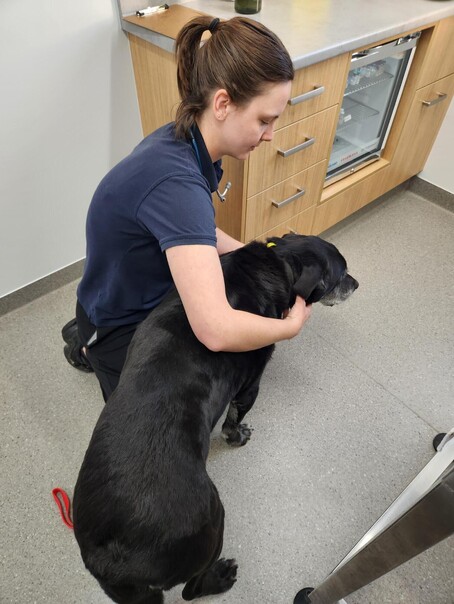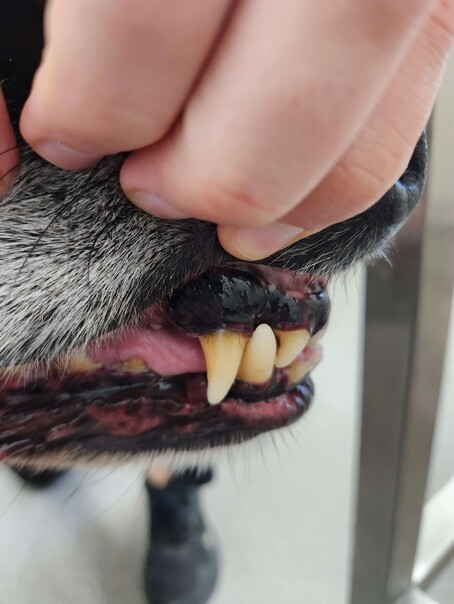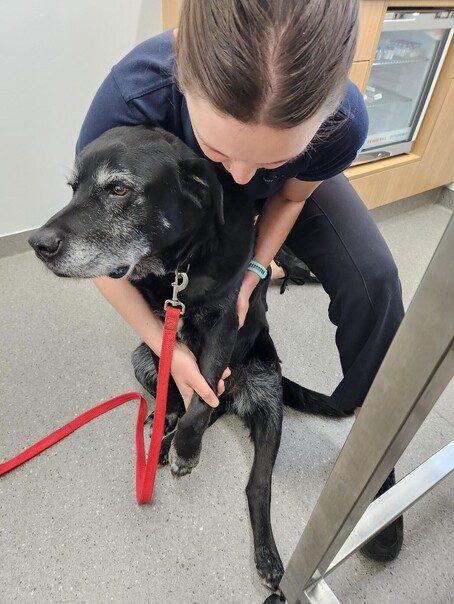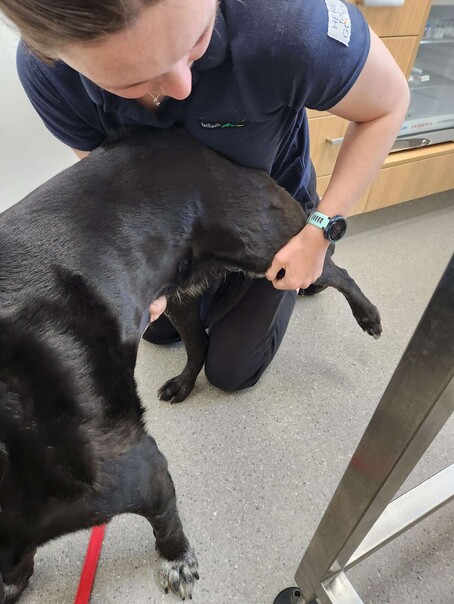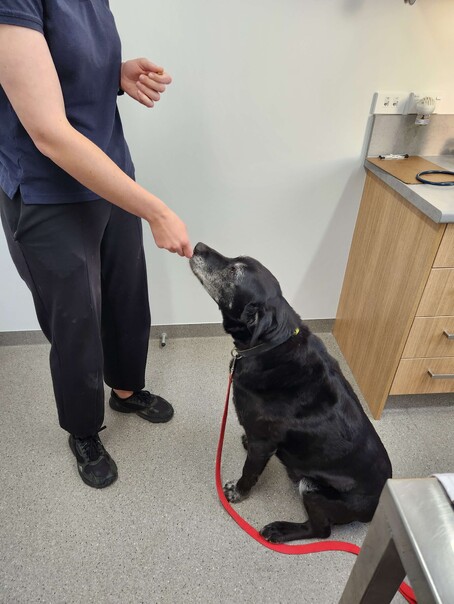As our canine companions get older, we want to do everything we can to keep them happy and healthy for as long as possible.
In general, the most common health issues older dogs develop are hearing and vision loss, dementia, cancer, heart problems, kidney issues, obesity, gastrointestinal issues, incontinence, and joint problems such as arthritis.
Typically, dogs will begin to show visible age-related changes at about 7-12 years of age, depending on their size and breed. Even if they are not displaying any obviously noticeable signs, they may be experiencing age-related deterioration, which could be alleviated if caught early by a vet.
Bringing your pet in for a senior dog health check may help to catch any developing issues early. It is a simple, non-invasive process, which is mostly seen by the pet as being a fun one-on-one with a friendly human in a blue uniform.
The steps of a senior dog health check:
Twelve year old Dumper is a labrador/huntaway cross, who enjoyed his recent senior dog health check with VetSouth small animal vet, Elin Clapton.
Stage 1:
Dumper sat politely on the scales in the waiting room to be weighed, and this weight was kept on his file for future reference.
Stage 2:
Dumper went through to the consult room and met Elin. She introduced herself to him, so that he relaxed and felt that she was his new best friend.
Stage 3:
Elin used a stethoscope to listen to Dumper’s heart to make sure it was beating regularly and at an appropriate speed, and to check for any extra sounds that may suggest anything was amiss. His lungs were also checked to ensure that the air flow was clear and audible.
Stage 4:
Dumper’s eyes and ears were checked under the guise of some head pats and cuddles. Elin checked his ears for any signs of redness or discharge, which may suggest infection. His eyes were checked to make sure that they were symmetrical, to see if there were any colour changes, and for anything else of concern.
Stage 5:
His teeth were examined to see if there was any buildup of tartar, any fractures in the teeth, or any root exposure or gum recession, that could be causing oral pain.
Stage 6:
The joints in Dumper’s legs were carefully checked to ensure they had a good range of movement, and to look for any pain when flexing and extending them. Elin was assessing if both legs felt symmetrical, and whether there was any crepitus (crunching) when moving the joints.
Stage 7:
Elin also did an abdominal palpation, checking on organ size and whether there were any lumps, or other things that should not be there. She also was looking to see if there was any pain during the palpation.
She also checked for any other lumps. Older dogs often develop random lumps, and Dumper had two or three that needed looking at. Elin recommended doing a fine needle aspirate to see if the lumps were masses that may cause concern. This is a simple process where a small sample is taken from the lump and quickly tested by the vet.
Stage 8:
At the end of the check, Elin confirmed Dumper’s opinion that she was a great vet, by giving him treats to reward his co-operation. These were very well received.
All in all, Dumper’s senior dog check was a success. The random lumps were nothing to be concerned about and were just fatty deposits.
He did show the beginnings of some arthritic changes in his elbow and had a slight reduction in his range of motion in the hip. He was slightly stiff on the right side, compared with the left.
Elin also felt he was slightly overweight.
So, Dumper left VetSouth with a plan to feed a high-quality dog food that was formulated for senior dogs and designed to support his joints and keep them comfortable. He will also be on a diet, so that he loses his excess weight, which will also improve his joint health.
